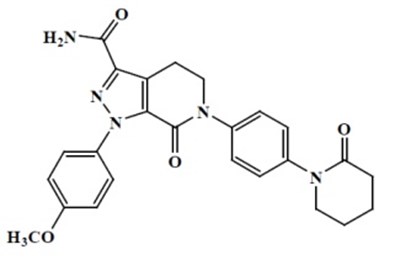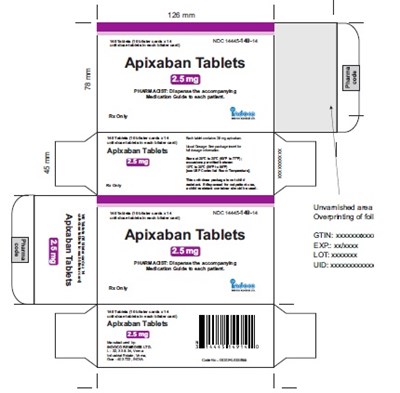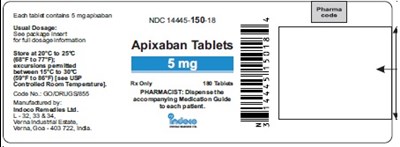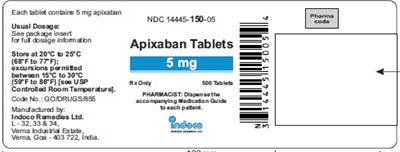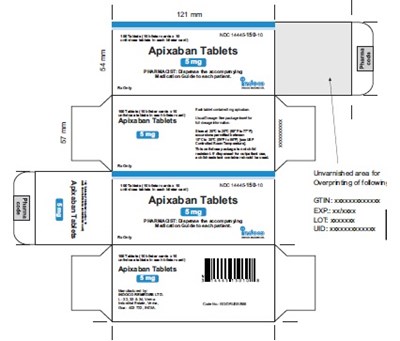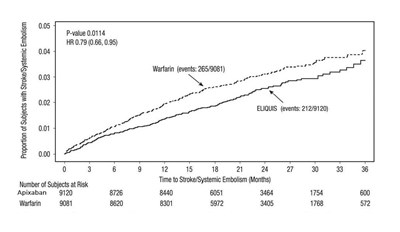Product Images Apixaban
View Photos of Packaging, Labels & Appearance
Product Label Images
The following 14 images provide visual information about the product associated with Apixaban NDC 14445-150 by Indoco Remedies Limited, such as packaging, labeling, and the appearance of the drug itself. This resource could be helpful for medical professionals, pharmacists, and patients seeking to verify medication information and ensure they have the correct product.
fig3 - Fig3
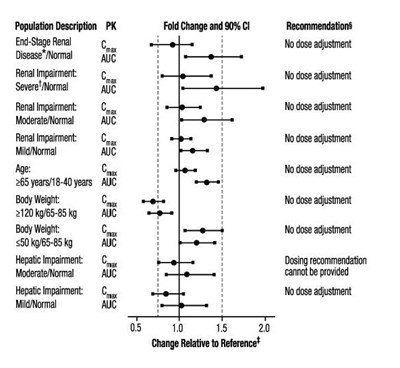
This is a table providing recommendations for dose adjustments of a medication based on various patient characteristics such as age, weight, renal and hepatic impairment, and disease status. The recommendations either suggest no dose adjustment is necessary or provide dosing recommendations based on the patient's characteristics.*
apixaban-2.5-180 - apixaban 2.5 180s

This text describes a medication called Apixaban Tablets. Each tablet contains 2.5 mg of the medication. The usual dosage information can be found in the package insert. The medication should be stored at a temperature between 20°C to 25°C (68°F to 77°F), with excursions permitted between 15°C to 30°C (59°F to 86°F). The product was manufactured by Indoco Remedies Ltd in Goa, India. The NDC number is 14445-149-18. The medication requires a prescription, and pharmacists should dispense a Medication Guide to each patient. There is also a Gode No. provided as GOIDRUGS/BS5.*
apixaban-2.5-500 - apixaban 2.5 500s
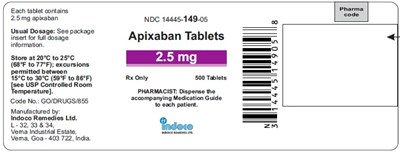
Apixaban Tablets contain 2.5mg of apixaban. The usual dosage information can be found in the package insert. Store the tablets at a temperature between 15°C to 30°C. The tablets are manufactured by Indoco Remedios Ltd. with the NDC 14445-149-05 and the code number GOIDRUGS/BE5. The medication guide should be dispensed to each patient by the pharmacist.*
apixaban-2.5-60 - apixaban 2.5 60s

This appears to be a label for a prescription drug called Apixaban Tablets with a dosage of 2.5 g per package. The label also includes a product code and NDC number. However, some of the text is unclear or nonsensical, so the exact details are difficult to determine without additional context.*
fig2 - fig2
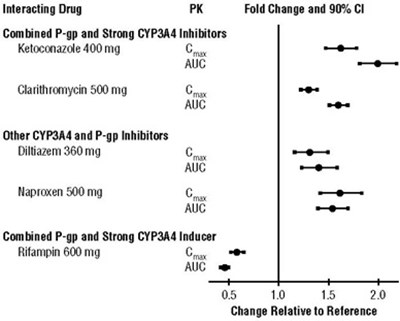
This appears to be a table or chart displaying the interaction between drug PK (pharmacokinetics) fold change and 90% confidence interval. The table shows the effects of different inhibitors and inducers on drug metabolism through P-gp and CYP3A4 enzymes. The drugs mentioned include Keloconazeie, Cliitiomycin, Diiazem, Haproxen, and Ritampin. The table also shows the change relative to reference at different time intervals.*
fig5 - fig5
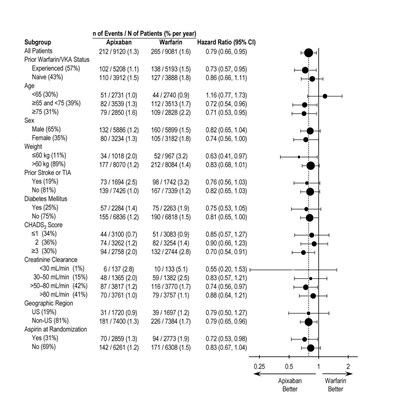
This text presents data from a study of patients grouped by prior warfarin/VKA status, age, sex, weight, prior stroke or TIA, diabetes mellitus, CHADS score, creatinine clearance, geographic region, and aspirin use. The study reports the number of events and patients for each group, expressed as events per year, and the hazard ratio with 95% confidence intervals. According to the hazard ratios, apixaban was found to be better for preventing events than warfarin for most of the studied groups.*
figure1 - figuere1
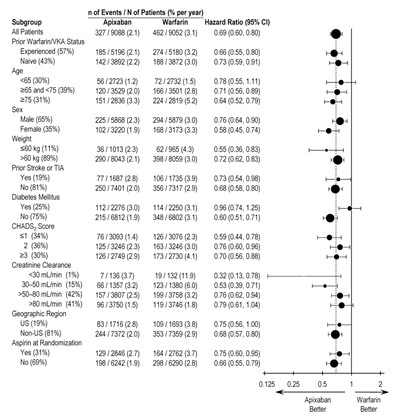
This data appears to be part of a clinical study or trial comparing the effectiveness of apixaban and warfarin for preventing stroke or TIA in patients with different demographic and health-related characteristics. The table includes information on the subgroup of patients studied, including prior warfarin/VKA status, age, sex, weight, prior stroke or TIA, diabetes mellitus, CHADS2 score, creatinine clearance, geographic region, and aspirin use at randomization. The table also provides the number of events (stroke or TIA) and the number of patients in each subgroup, as well as the hazard ratio and 95% confidence interval comparing the effectiveness of apixaban vs. warfarin. The last line suggests that overall, apixaban was found to be better than warfarin in preventing stroke or TIA.*
* The product label images have been analyzed using a combination of traditional computing and machine learning techniques. It should be noted that the descriptions provided may not be entirely accurate as they are experimental in nature. Use the information in this page at your own discretion and risk.
